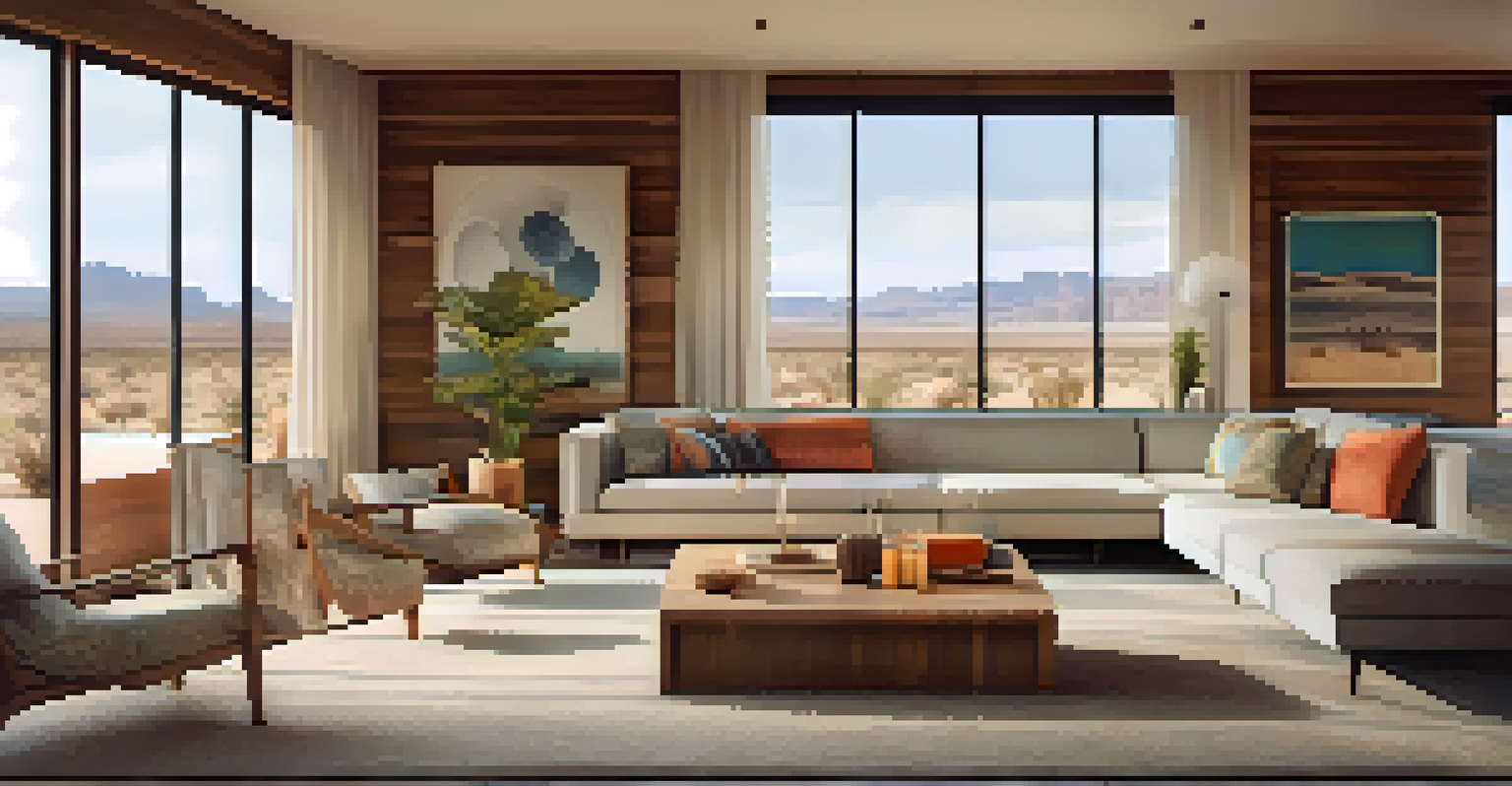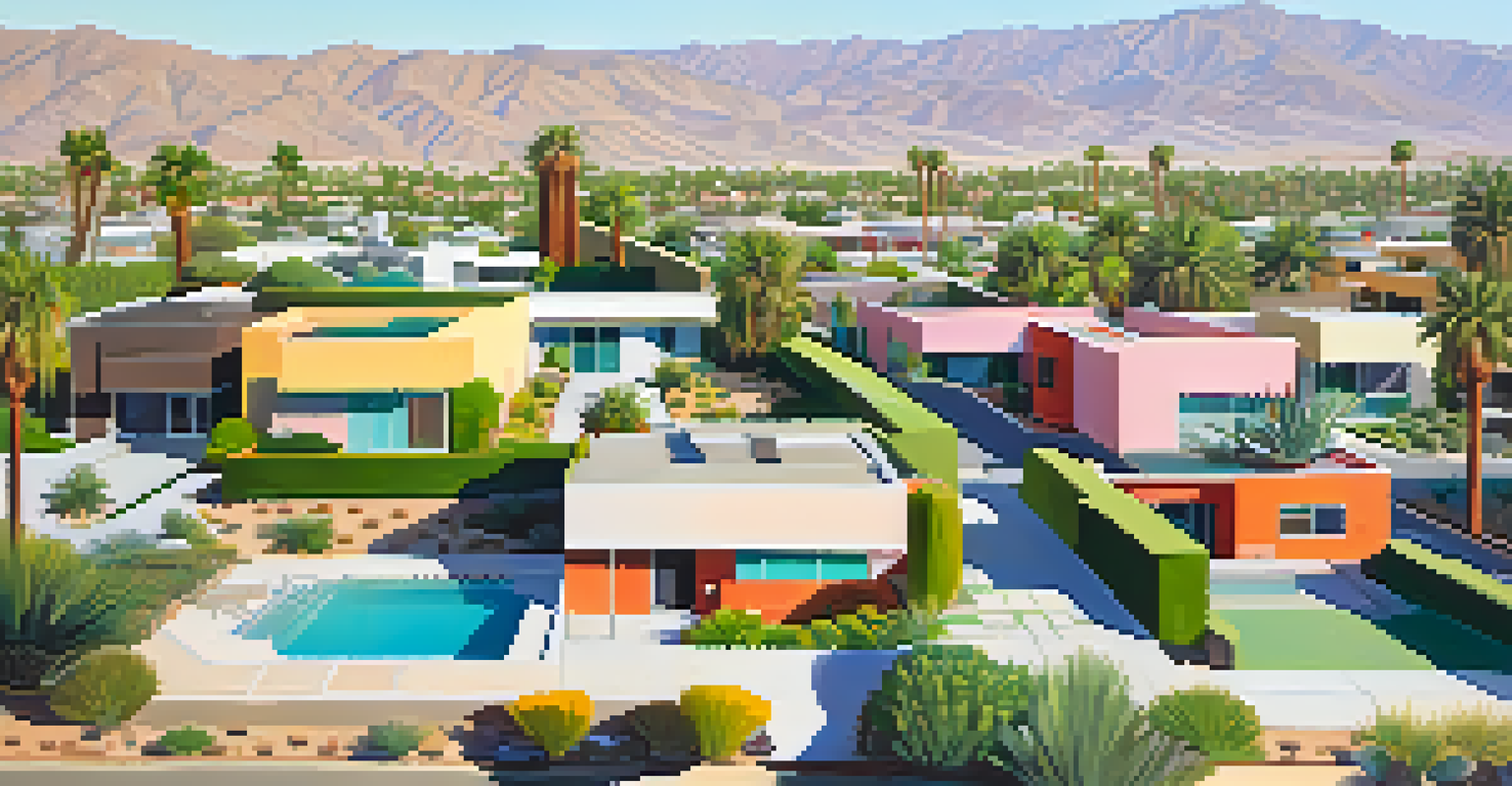The Evolution of Mid-Century Modern Architecture in Palm Springs

Origins of Mid-Century Modern Architecture in Palm Springs
Mid-Century Modern architecture began to take shape in the 1940s and 1950s, emerging as a response to the changing lifestyles of post-war America. In Palm Springs, this style flourished due to its warm climate and the influx of affluent residents seeking a desert retreat. Architects like Richard Neutra and Albert Frey were instrumental in designing homes that blended indoor and outdoor living, a hallmark of the style.
Good design is making something intelligible and memorable. Great design is making something memorable and meaningful.
The architectural movement emphasized simplicity and functionality, often showcasing flat planes, large glass windows, and open spaces. This approach not only created a sense of spaciousness but also allowed residents to connect with the stunning desert landscape. The unique blend of natural elements and modern design made these homes iconic.
As Palm Springs gained popularity as a vacation destination, the demand for innovative, stylish homes grew. This led to a surge in Mid-Century Modern designs that reflected the era's optimism and creativity, attracting celebrities and architects alike. This foundation set the stage for the evolution of the architectural style in the years to come.
Key Architects Shaping the Mid-Century Modern Movement
Several architects played pivotal roles in defining Mid-Century Modern architecture in Palm Springs. Richard Neutra, known for his emphasis on harmony with nature, designed homes that seamlessly integrated with the desert surroundings. His work exemplified the movement's core principles, focusing on light, space, and the landscape.

Another influential architect was Albert Frey, who brought a unique perspective to the design of desert homes. His creations often featured bold colors and innovative materials, reflecting the vibrant spirit of Palm Springs. Frey's designs, like the Frey House I, are celebrated for their striking aesthetics and functional layouts.
Mid-Century Modern's Cultural Roots
Mid-Century Modern architecture in Palm Springs emerged in the 1940s and 1950s, reflecting post-war lifestyles and the area's natural beauty.
Lastly, the contributions of Donald Wexler cannot be overlooked. His work with steel structures, such as the iconic Wexler Steel Houses, showcased a modern approach that was both durable and visually appealing. Together, these architects transformed Palm Springs into a canvas for Mid-Century Modern architecture, leaving a lasting legacy.
Influence of the Desert Landscape on Design Choices
The stunning desert landscape of Palm Springs significantly influenced Mid-Century Modern architecture. Architects sought to create designs that harmonized with the natural environment, using materials and colors that echoed the surrounding mountains and sky. This connection to nature is evident in the use of large windows and open floor plans that invite the outdoors in.
Architecture is the learned game, correct and magnificent, of forms assembled in the light.
Designs often included outdoor living spaces, such as patios and pools, which allowed residents to enjoy the warm climate and beautiful views. This seamless blend of indoor and outdoor spaces became a defining characteristic of the style, enhancing the overall living experience. The landscape wasn't just a backdrop; it was an integral part of the architectural vision.
Moreover, the use of local materials, such as stone and wood, further connected these homes to their desert setting. This approach not only added to the aesthetic appeal but also emphasized sustainability, aligning with the natural beauty of Palm Springs. The result was a unique architectural style that celebrated its environment.
The Role of Hollywood in Popularizing Palm Springs Architecture
During the mid-20th century, Palm Springs became a playground for Hollywood's elite, which greatly influenced the popularity of Mid-Century Modern architecture. Celebrities like Frank Sinatra and Marilyn Monroe commissioned homes that showcased the latest architectural trends, often designed by leading architects of the time. This celebrity association added glamour and allure to the architectural style.
As these stars shared their desert retreats with the world, the demand for similar homes skyrocketed. The allure of owning a Mid-Century Modern home became synonymous with luxury and sophistication. This trend attracted many affluent buyers and investors, eager to own a piece of the architectural movement that defined an era.
Hollywood's Influence on Design
The allure of celebrities in Palm Springs popularized Mid-Century Modern homes, making them a symbol of luxury and sophistication.
The spotlight on Palm Springs continued to shine as films and television shows showcased its stunning homes and landscapes. This media presence not only elevated the status of the architecture but also solidified Palm Springs as a cultural and architectural landmark. The connection between Hollywood and Mid-Century Modern design is a fascinating chapter in the evolution of this unique style.
Preservation Efforts for Mid-Century Modern Homes
As the popularity of Mid-Century Modern architecture grew, so did concerns over the preservation of these iconic homes. Many structures faced demolition or neglect as newer developments emerged. However, local preservation groups and advocates began to recognize the historical significance of these designs, leading to efforts aimed at protecting them.
In 1994, the Palm Springs City Council established the Palm Springs Modern Committee, dedicated to promoting and preserving Mid-Century Modern architecture. This initiative has led to increased awareness and appreciation of the style, resulting in successful preservation campaigns. Events like Modernism Week have also played a key role in celebrating and showcasing these architectural treasures.
These preservation efforts not only safeguard the homes but also educate the public about their cultural importance. By maintaining these structures, Palm Springs can continue to honor its architectural legacy while inspiring future generations. The preservation movement highlights the value of history and design in shaping a community's identity.
Modern Adaptations of Mid-Century Modern Design
In recent years, there has been a resurgence of interest in Mid-Century Modern architecture, influencing contemporary design trends. Many homeowners and architects are embracing the style's principles, adapting them for modern living while still paying homage to the original designs. This evolution reflects a growing appreciation for the timeless characteristics of Mid-Century Modern architecture.
Modern adaptations often incorporate sustainable building practices and technology, ensuring these homes meet today's environmental standards. For instance, energy-efficient materials and smart home systems are becoming commonplace in new constructions, blending modern convenience with classic design. This fusion allows residents to enjoy the aesthetic appeal of Mid-Century Modern homes while benefiting from contemporary advancements.
Preservation Efforts for Iconic Homes
Local initiatives and events like Modernism Week have been vital in preserving Mid-Century Modern architecture and educating the public about its significance.
Additionally, the aesthetic of Mid-Century Modern is being integrated into various design fields, from furniture to landscaping. This cross-pollination enriches the overall design landscape and keeps the spirit of Mid-Century Modern alive. As a result, the style continues to evolve, proving that great design is truly timeless.
The Future of Mid-Century Modern Architecture in Palm Springs
Looking ahead, the future of Mid-Century Modern architecture in Palm Springs appears promising. With increasing interest in preservation, design innovation, and sustainability, there's a strong foundation for the style to continue thriving. The community's commitment to maintaining its architectural heritage ensures that these iconic homes will remain a vital part of Palm Springs' identity.
Moreover, the rise of design tourism has further solidified Palm Springs as a destination for those seeking to experience Mid-Century Modern architecture firsthand. Events, tours, and educational programs attract architecture enthusiasts from around the world, fostering a culture of appreciation and respect for the style. This interest not only benefits local businesses but also enhances the community's pride in its architectural legacy.

As new generations of homeowners and architects embrace Mid-Century Modern design, the style is likely to adapt and evolve while staying true to its roots. The ongoing dialogue between past and present will ensure that Palm Springs remains a beacon of architectural innovation, celebrating its unique history while looking toward the future.